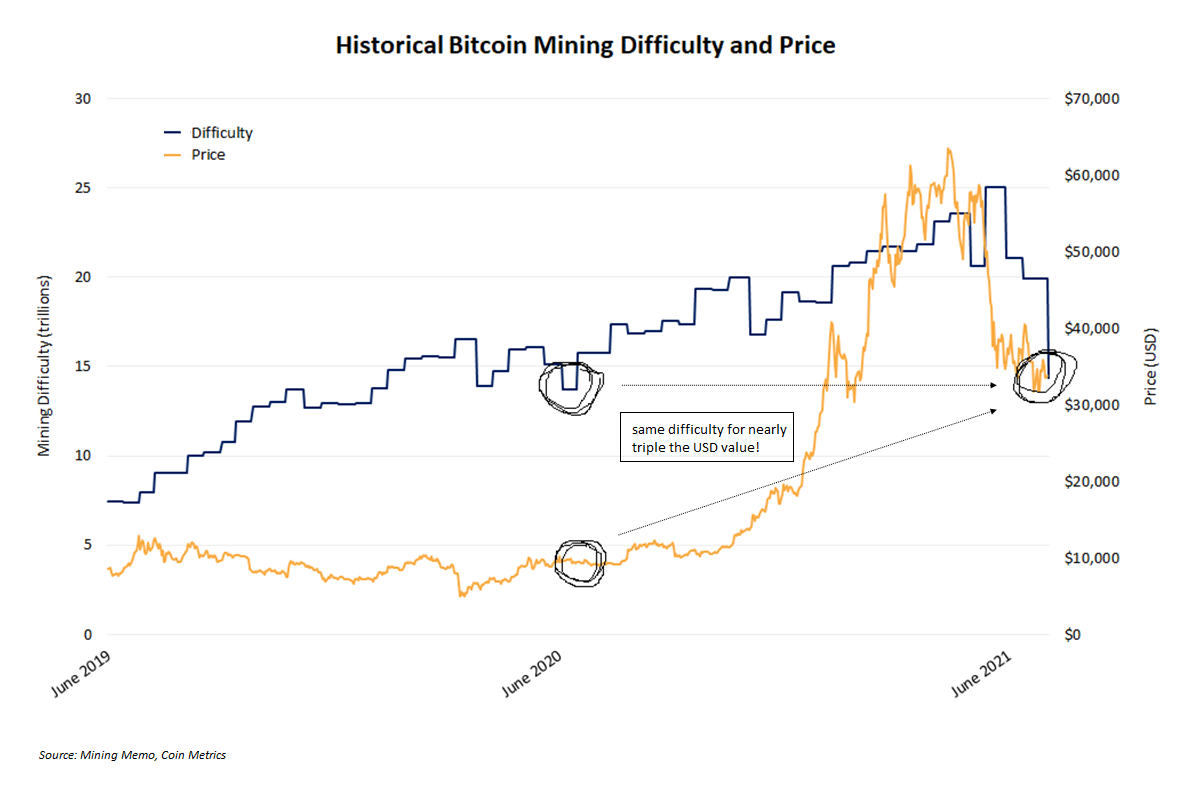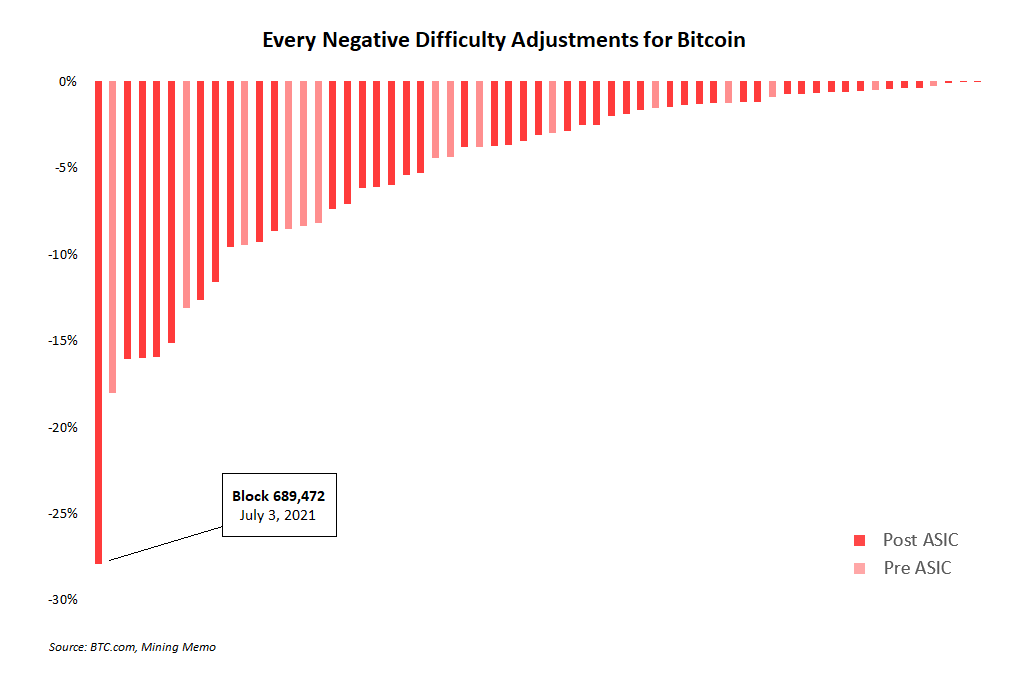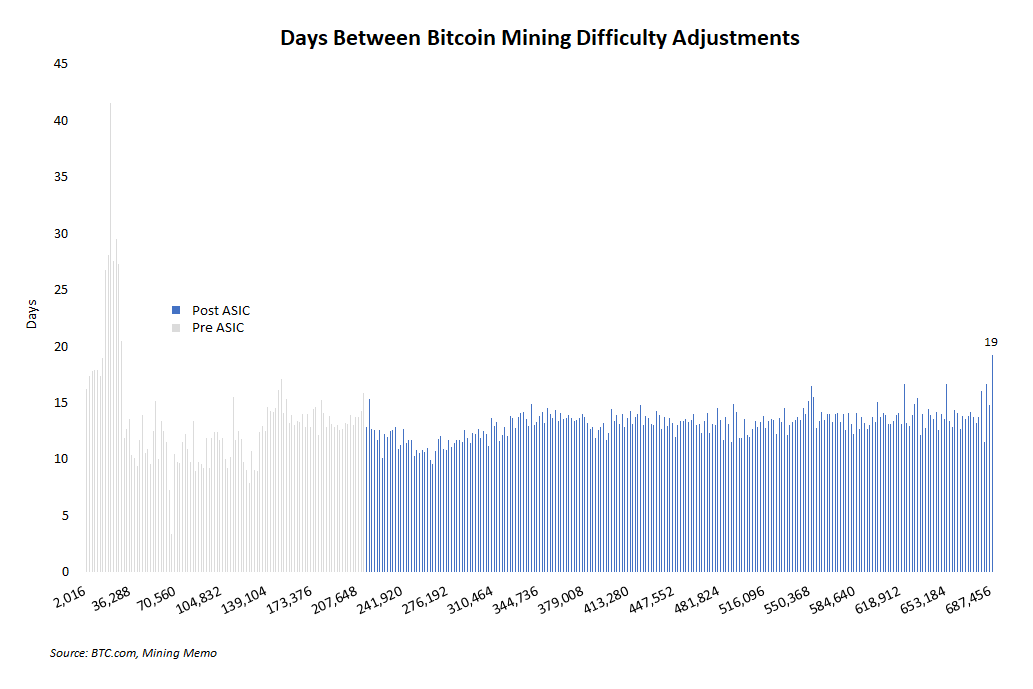The difficulty level of Bitcoin mining – set by the network itself and adjusted every 2,016 blocks – just dropped by the largest percentage increment ever. As of block 689,472, difficulty fell to roughly 15 trillion, down from nearly 20 trillion at the last adjustment on June 13.
When the network experiences a reduction in hash power, difficulty drops. When more miners come online, adding hash power, difficulty increases.
Read: What is mining difficulty?
The enormous downward adjustment in difficulty comes as the network suffered its largest quarterly loss of hash power ever thanks to the scramble to relocate ASICs after China’s crackdown on domestic bitcoin mining companies.

The primary effect from the difficulty drop is a relatively significant boost in profits for miners. Mining bitcoin at $65,000 would always be preferred to mining bitcoin at $35,000. But the last time mining difficulty was this low, bitcoin was worth only $9,000.

For the same level of difficulty, bitcoin is now worth nearly 300% more.
Want more mining insights like this?
The negative adjustment itself dwarfs a downward adjustment in October 2011 that was previously the largest drop. The final drop was registered at just below 28%.

Thanks to slow block times, this adjustment set another record. Measured by calendar days, this epoch took the longest to conclude since ASIC mining began.

When hashrate starts recovering, block times will return back to a more normal level. But for now, they remain relatively long, meaning creating new blocks takes longer than usual.
Bitcoin blocks are still pretty slow. But time between blocks is starting to shorten a little bit, dipping back to what has previously been the upper bound of average block times.
— Mining Memo (@miningmemo) July 2, 2021
35 blocks to go. pic.twitter.com/HHAO8xOXk5

